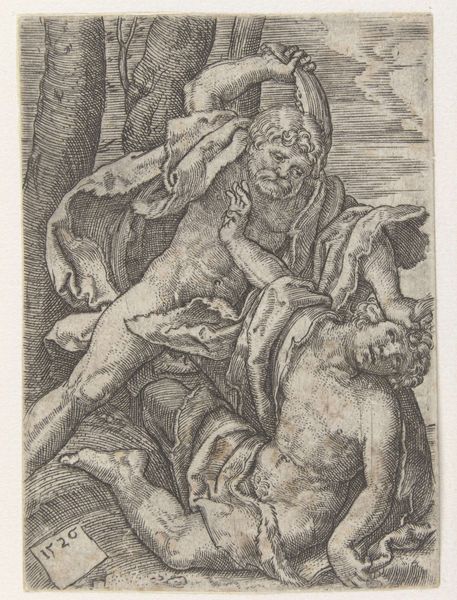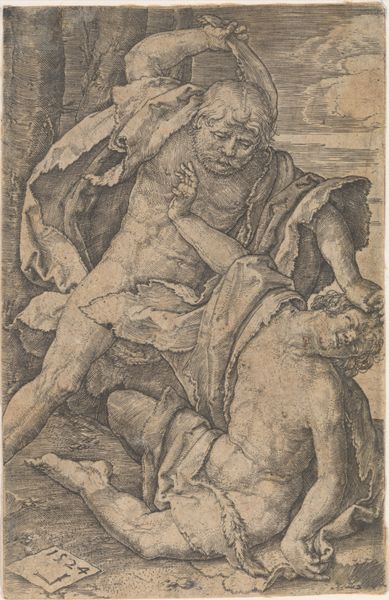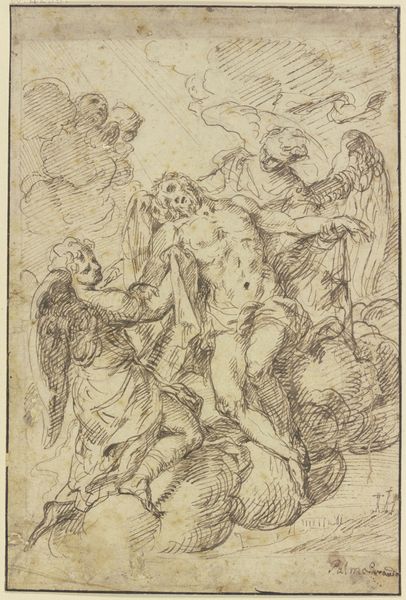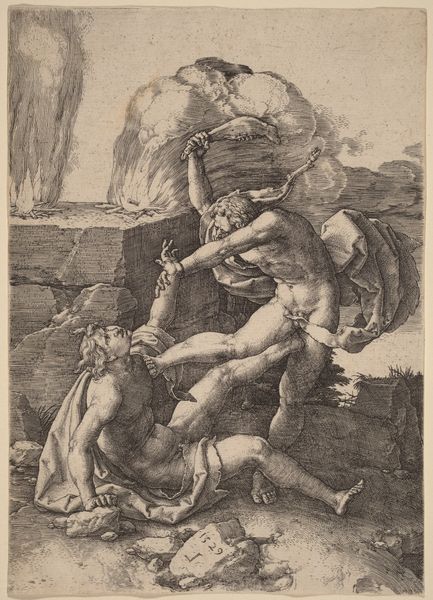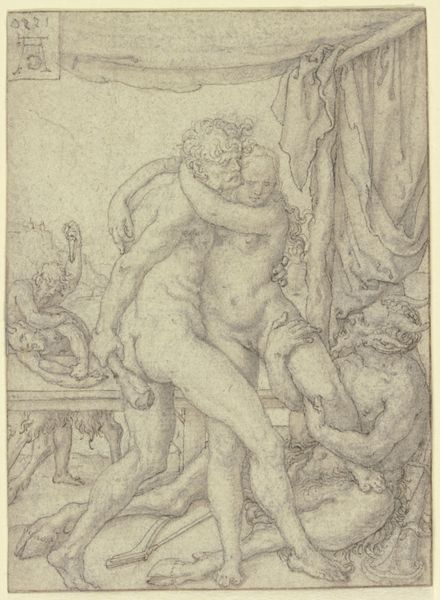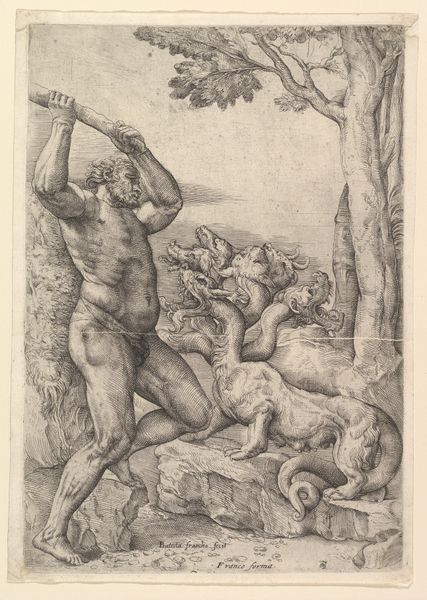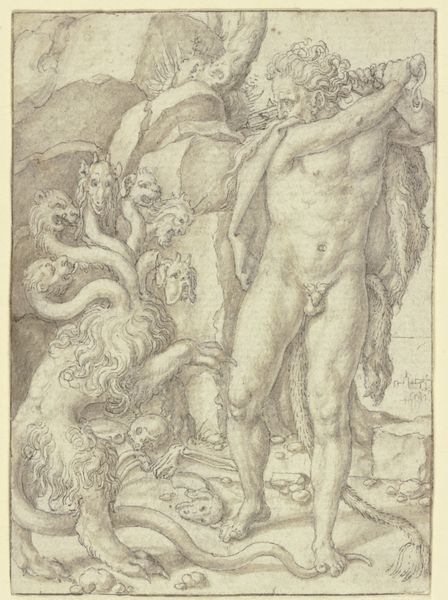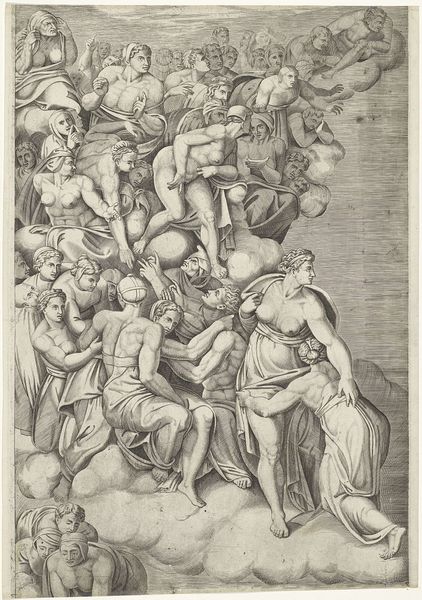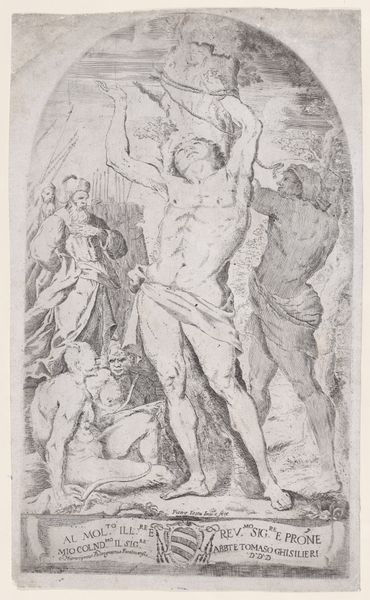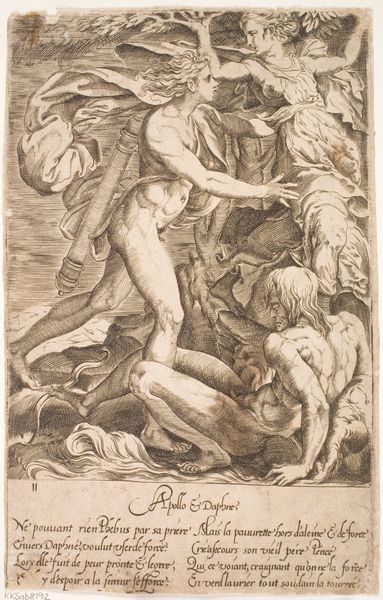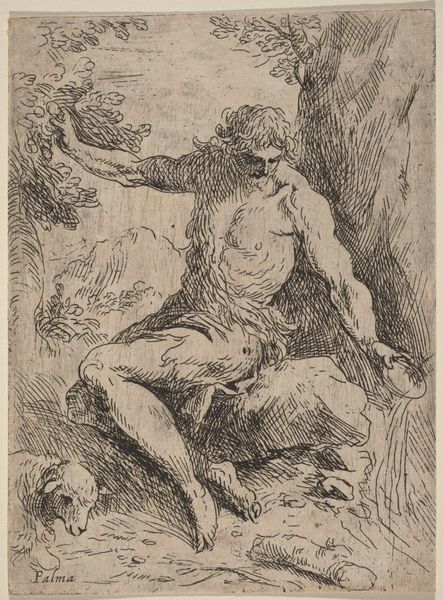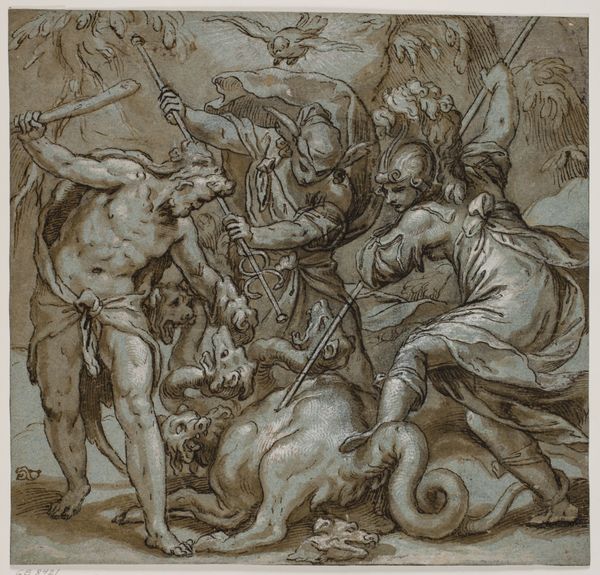
drawing, ink, pencil, chalk, engraving
#
drawing
#
pen sketch
#
pencil sketch
#
figuration
#
11_renaissance
#
ink
#
pencil
#
chalk
#
history-painting
#
engraving
Copyright: Public Domain
Editor: This detailed drawing, "Hercules Kills Cacus," from around 1550 by Heinrich Aldegrever, is rendered in pencil, chalk, ink, and engraving. There’s a dynamism in the struggle; it feels so alive even though it’s monochrome. What can you tell me about the cultural and material context that produced such a vivid image? Curator: It's fascinating to consider the materiality of this work within its period. Aldegrever's use of multiple media - chalk, pencil, ink, engraving - speaks to the accessibility of printmaking as a method of dissemination. Do you think the combination of these techniques, cheap and readily available, served to democratize access to classical narratives, which had historically been exclusive to wealthy patrons who commissioned paintings and sculptures? Editor: That's an interesting angle! So, engravings made the classics accessible? How would this affect popular understandings of those stories? Curator: Precisely! The reproductive nature of engraving transformed these grand narratives into commodities, consumed not just by elites but also a burgeoning middle class. Notice how Hercules' body is emphasized—muscular, almost vulgar. It challenges the idea of a hero of refinement, aligning him with labor and physical strength in a way that might resonate with a different segment of the population than, say, a perfectly sculpted marble statue in a palace. Editor: I hadn't considered that. The medium *is* the message, I guess? Is this the beginning of reproducible artworks in the service of…something? Curator: Exactly. Ask yourself, how does this affect his image, and therefore the hero narrative itself, when it becomes less about divine appointment and more about the sheer brutality of labor, rendered in readily available and affordable materials? Perhaps this affordability encouraged broader readings, turning classical myth into a spectacle available for anyone with a coin. Editor: So by cheapening it, we're making the image universally applicable? Curator: Think about the role of labour itself – Aldegrever meticulously crafted each line. It links Hercules to labor - physical strength on display - while reflecting his own artistic labour as a producer. It reframes what is at stake when creating or reproducing 'art'. It's about changing who can produce and who consumes it. Editor: I hadn’t really thought about the material aspects shaping our perception of something as classical as Hercules. That shifts everything for me! Curator: Indeed. It's a powerful reminder that how art is made, distributed, and consumed profoundly impacts its meaning.
Comments
No comments
Be the first to comment and join the conversation on the ultimate creative platform.

